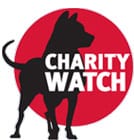The 2011 National Youth Tobacco Survey, released by the Centers for Disease Control and Prevention, found that cigarette smoking rates continue to fall, with new lows of 15.8 percent among high school students and 4.3 percent among middle schoolers.
Anti-smoking forces have learned what works in the campaign against cigarette smoking — higher tobacco taxes, funding for cessation and prevention programs, strong anti-smoking laws and regulation of tobacco products and marketing.
Unfortunately, the tobacco industry has learned some lessons, too. The survey provides sad confirmation that tobacco companies are successfully exploiting discrepancies in the law. Candy and fruit-flavored cigarettes are banned, but cigars are not regulated by the Food and Drug Administration.
It’s no accident that there’s been a significant increase in cigar smoking among African-American high schoolers, from 7.1 percent in 2009 to 11.7 percent last year. Among all high-school boys, 15.7 percent smoke cigars and 12.9 percent use smokeless tobacco.
The FDA should assert jurisdiction over all tobacco products, and Congress should close loopholes that help the industry lure new, young customers with cheap, sweet cigars that look and smoke just like cigarettes. Lawmakers can help, too, by setting tax rates on cigars and smokeless tobacco that are as high as those on cigarettes.
The insidious use of flavors and marketing campaigns geared to young people are no different from campaigns of old, which enticed generations of young people to take up a habit that made smoking the No. 1 cause of preventable disease in the nation. These tactics must be snuffed out.
###
See this article at its original location Pittsburgh Post-Gazette >








